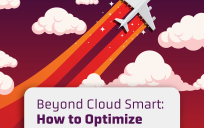Estimating what you need to complete a task isn’t easy, whether you’re a team of one or 1,000. That’s especially true for complex missions in which technology and equity are integral to achieving desired outcomes.
For the team at Wildflower International, a small, woman-owned IT hardware and software solutions company, taking a proactive approach to problem-solving has been key. That has meant understanding how technologies such as cloud computing are evolving in the market and how it directly ties to business outcomes for customers, which include the Energy Department’s National Laboratories.
As a Solutions Architect with Wildflower’s data center portfolio, Carsten Paulsen knows firsthand how integral cloud is to supporting these labs’ massive missions, such as climate science and hazardous-materials storage, and their impacts on local communities.
“We work to stay in front of emerging technologies like cloud and its implications for agencies,” he said. For the labs, that has meant the ability to quickly transition workloads to the cloud as they expand, without disrupting meaningful work.
So what can public servants take away from the impactful work that Wildflower supports? Paulsen shared these best practices for using technologies such as cloud to guide your efforts.
1. Elevate outcomes above a particular technology
“Keeping the solution that you’re solving for relevant has to be a priority,” Paulsen said. “It can’t be about having the latest and greatest.” For his team, that means ensuring whatever technology solution they choose is relevant to how the laboratories do business.
For example, at the labs, that means considering the broader social issues of using a particular technology and what best supports overall outcomes.
2. Assess the impacts of your decisions
As you consider the outcomes, also think through how the solution affects users, local communities, the public and your organization’s ability to positively effect change.
These types of questions are woven into the fabric of Wildflower’s core values and how it operates as a Historically Underutilized Business Zone company. “As we grow, we’re directly and positively affecting business zones that have been historically underutilized,” Paulsen said. “We have a deep culture of showing the community that we are grateful for the fact that we are a part of it, and Wildflower was just recognized as the Dell Technologies Federal Partner of the Year for Excellence in Social Impact.”
3. Understand your current environment
Having a trusted guide on your migration journey can help you assess where you are today and where you want to be in the future. Cloud readiness doesn’t look the same for every agency and evolves as users’ needs change.
“We assess and identify all assets present in the network and determine resource usage, interconnectedness, and interdependencies with other physical and/or virtual devices or applications,” Paulsen said. “The ultimate goal is to craft a cloud strategy that is appropriate for your agency’s journey and mission.”
This article is an excerpt from GovLoop’s recent guide, “Delivering Government Services Through a Lens of Equity: Technology, Policies and Conversation Starters.” Download the full guide here.





Leave a Reply
You must be logged in to post a comment.